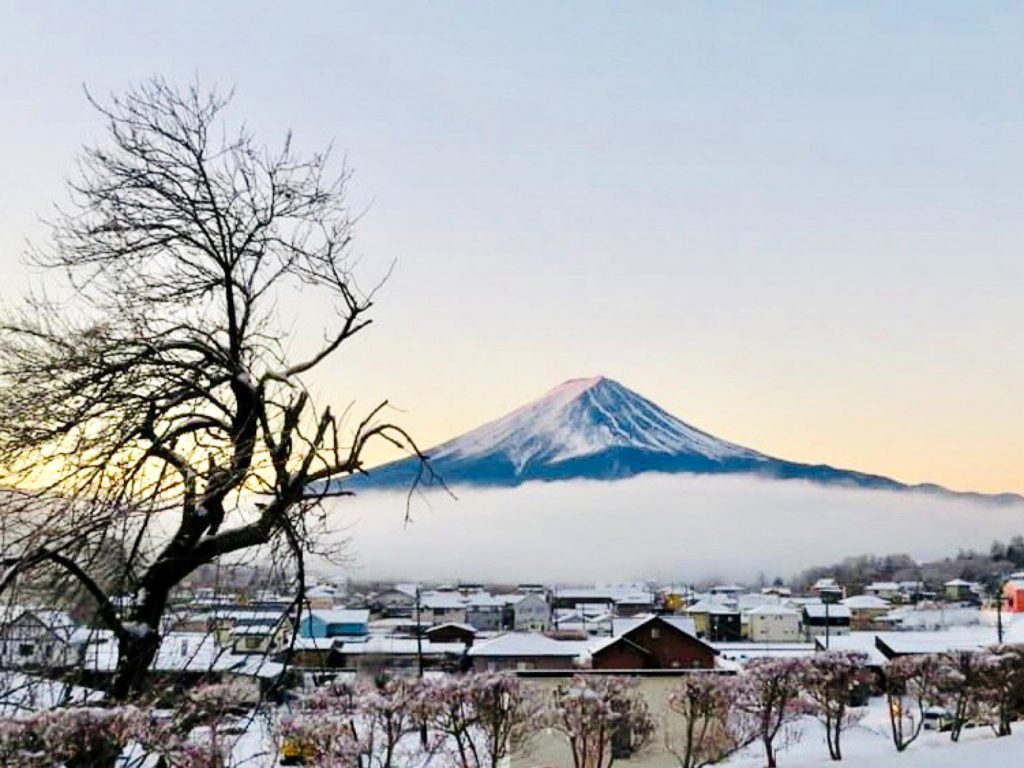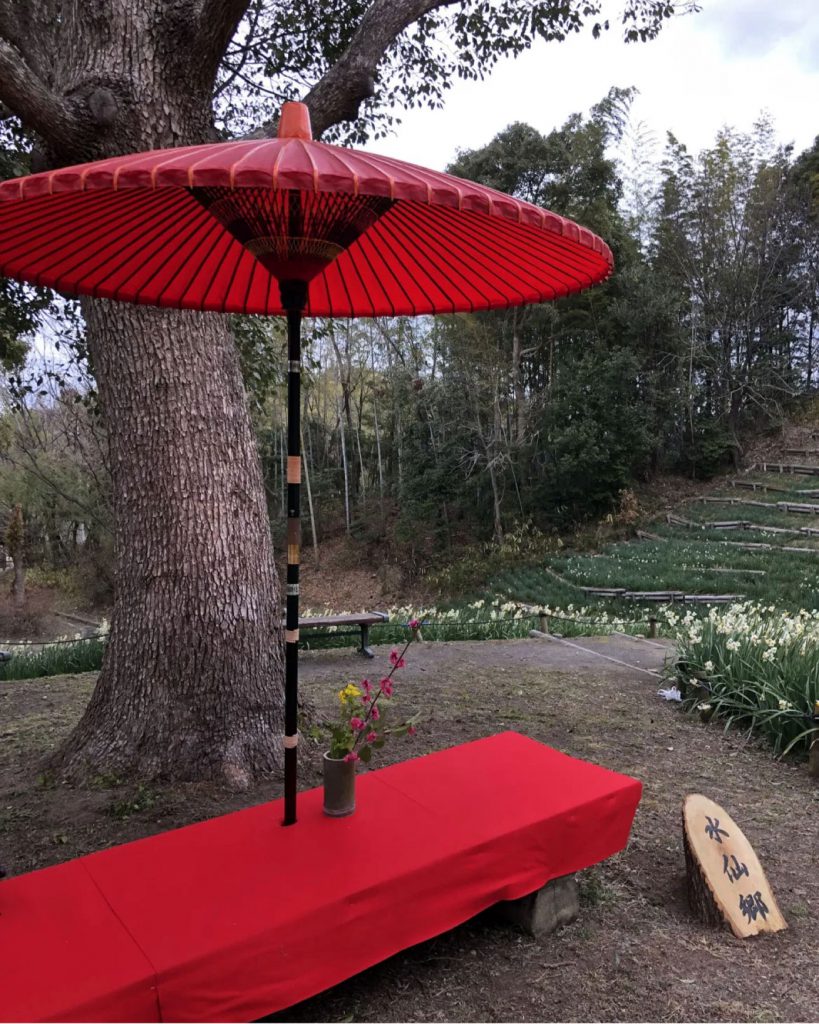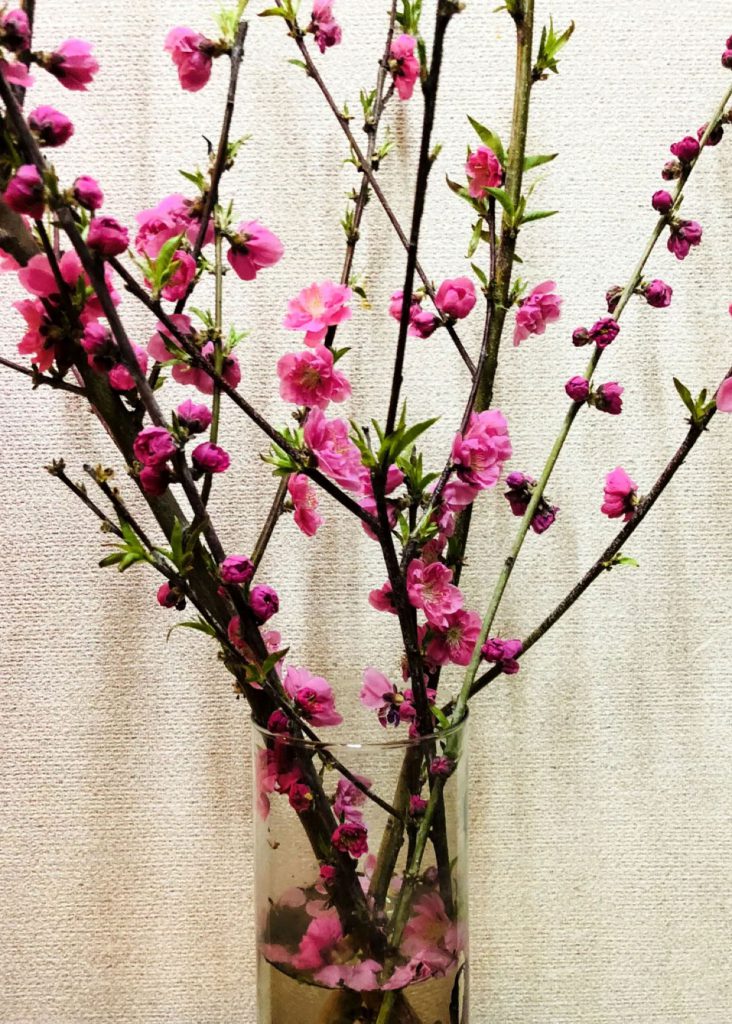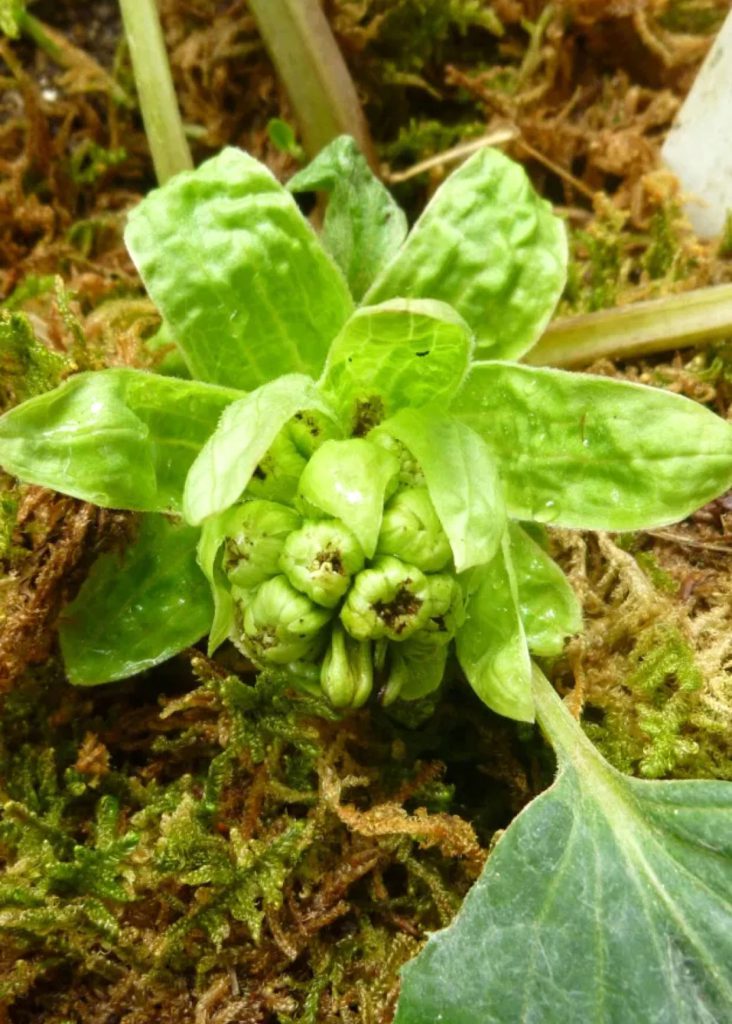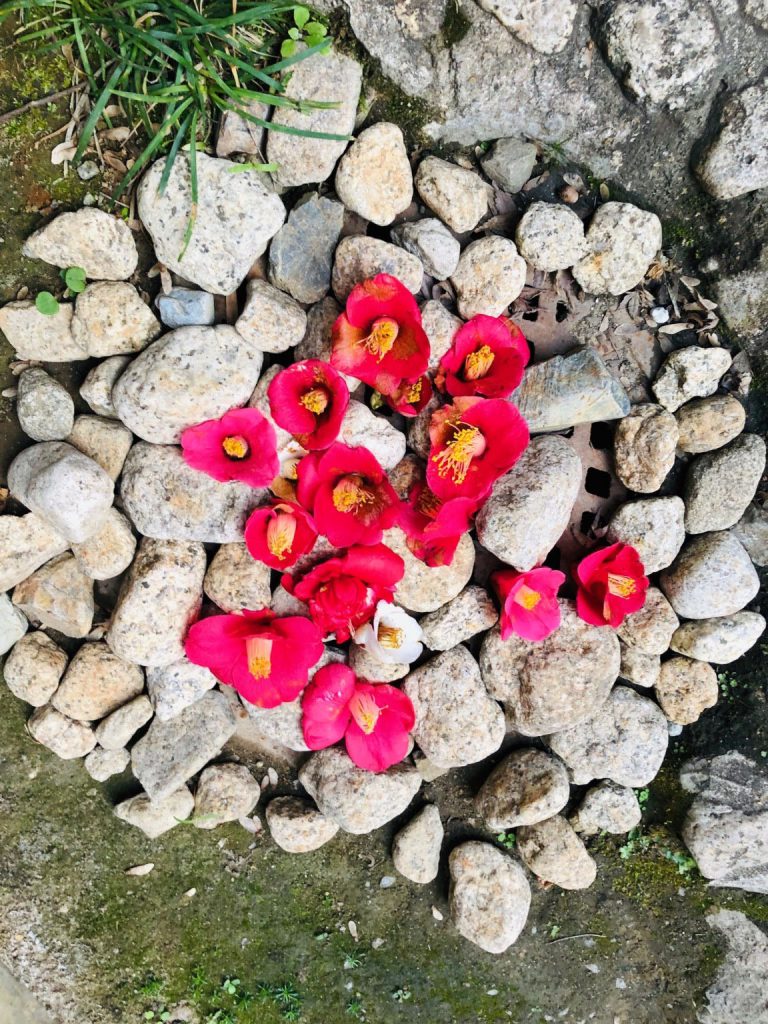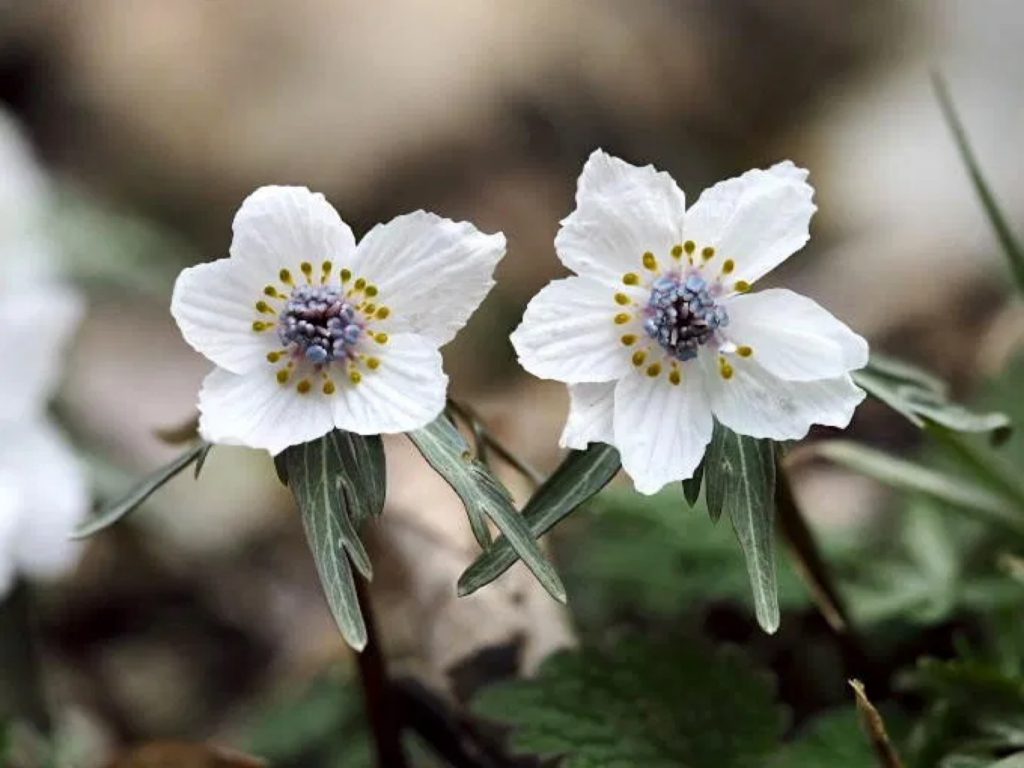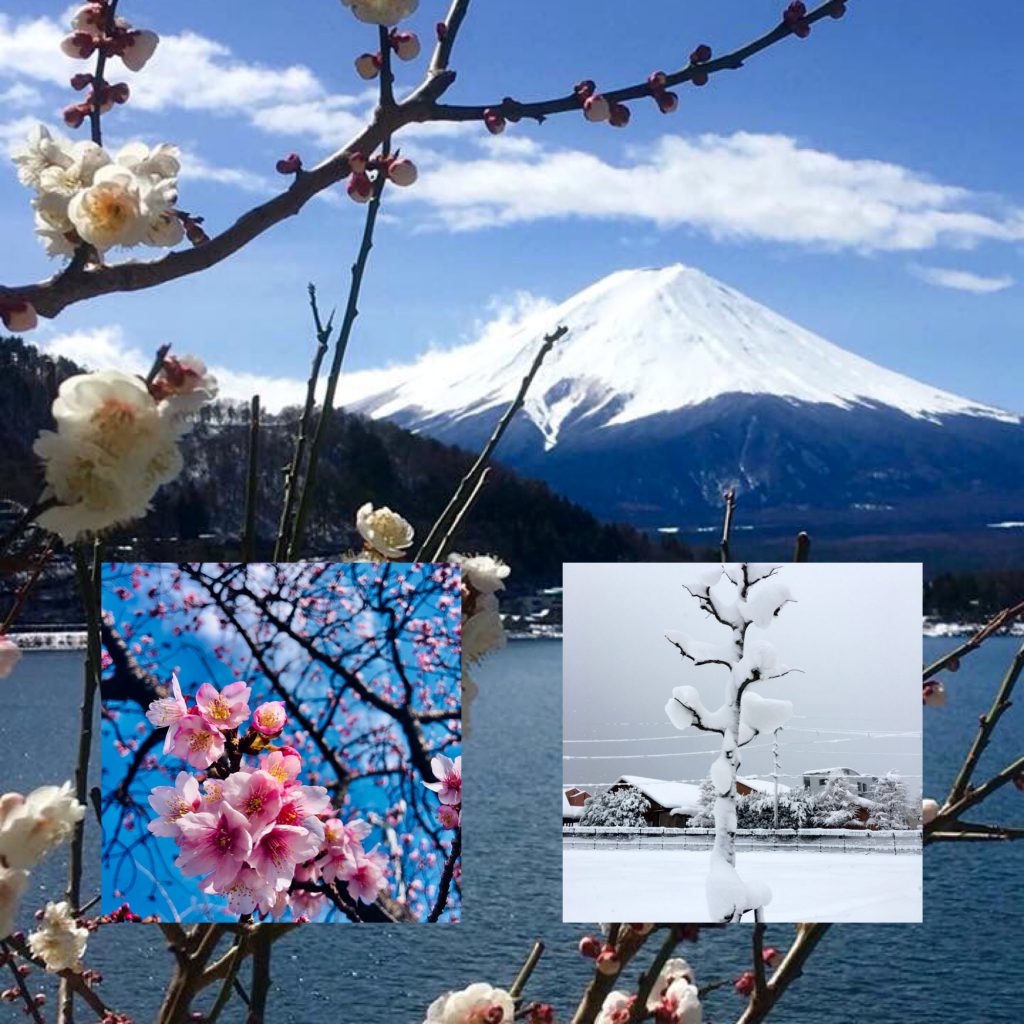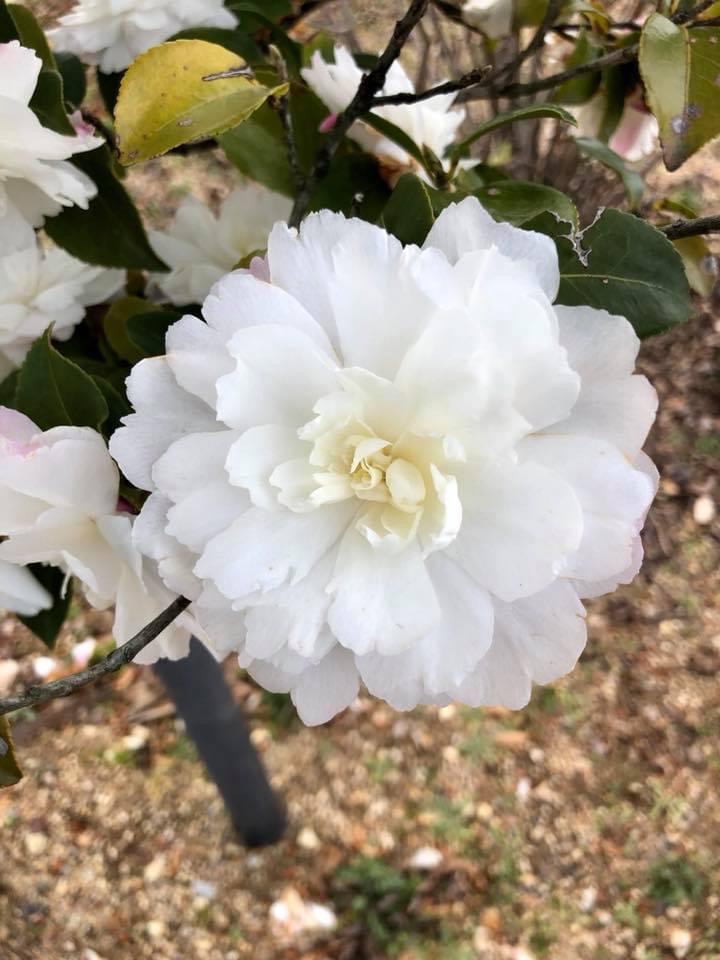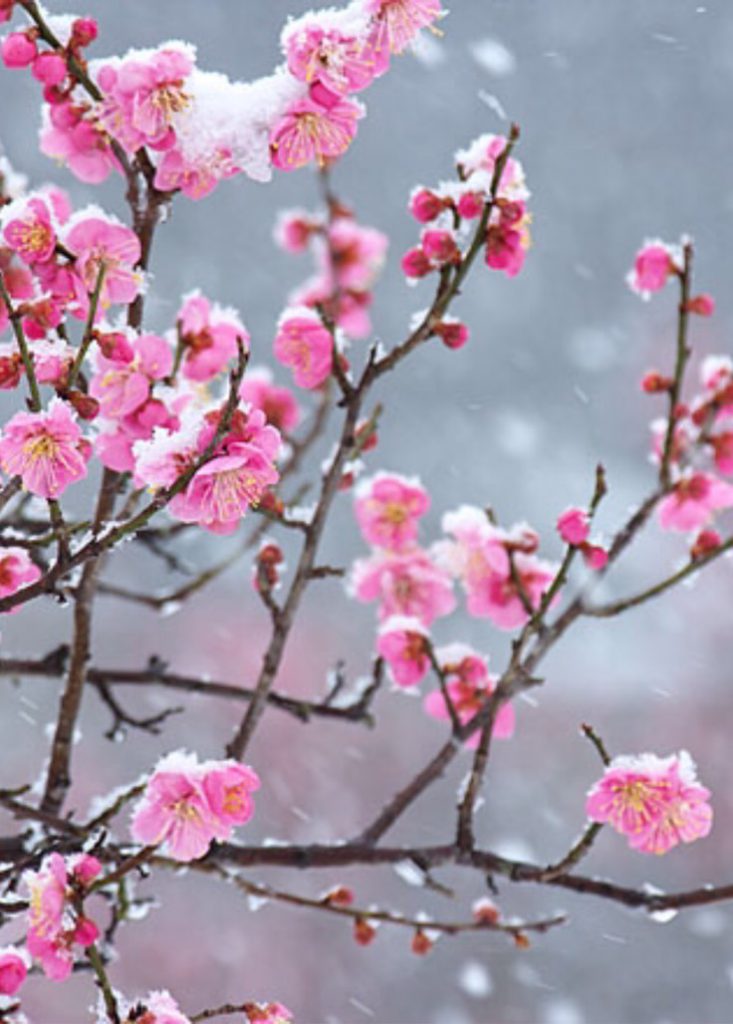
The old plum tree, which the knotted trunks and branches are covered with moss and parasitized by Noxinobu, are blooming beautifully this year as well. The vitality to make such flowers bloom even when it is old is just amazing. Even in the same life form, some woody plants are hundreds of years old, and some are thousands of years old, but plums are said to be a few hundred years old at the longest. It is said that the plums that bear fruit are about the same as the lifespan of a person. Even so, I envy it because it blooms to the end and bears fruit.
節くれだった幹や枝には苔が覆い、ノキシノブが寄生する梅の古木に、今年も見事な花を咲かせています。老いてもこれだけの花を咲かせる生命力には只々驚くばかりです。同じ生命体でも、木本系の植物には樹齢何百年、中には何千年と言う木々がありますが、梅は長くて二三百年と言われています。実を採る梅は人の寿命と同じ位だそうです。それにしても、最後まで花を咲かせ、実を付けるのですから、やはり羨ましい限りです。

